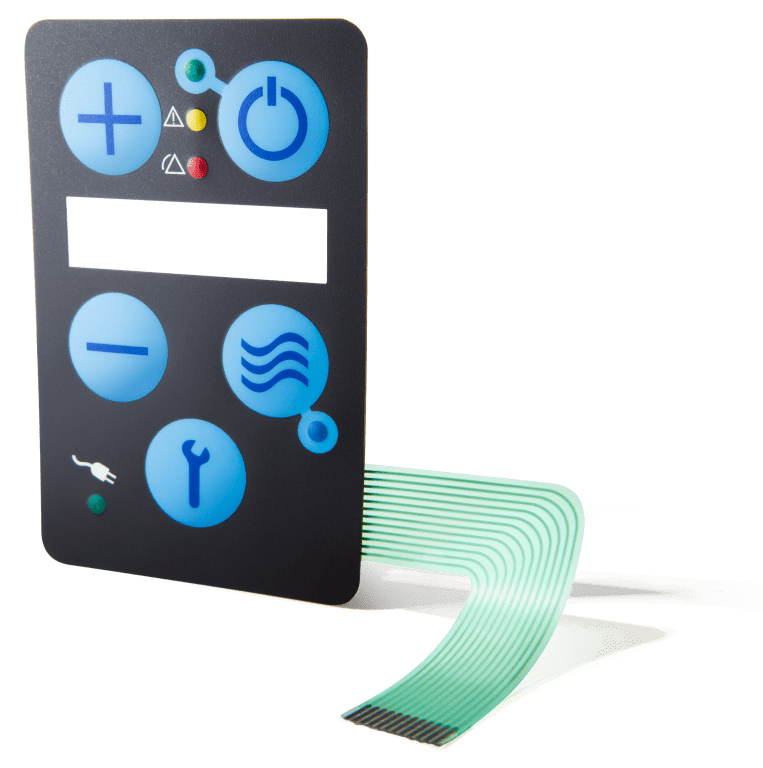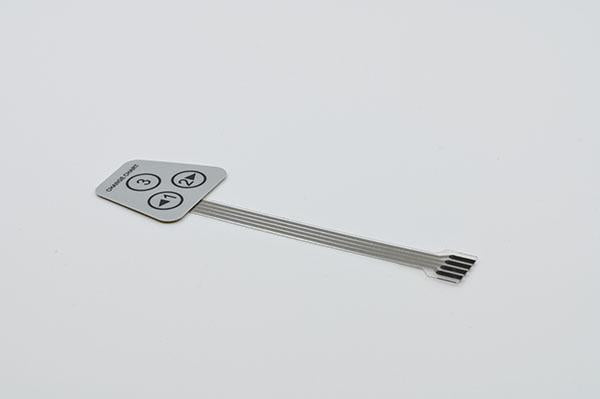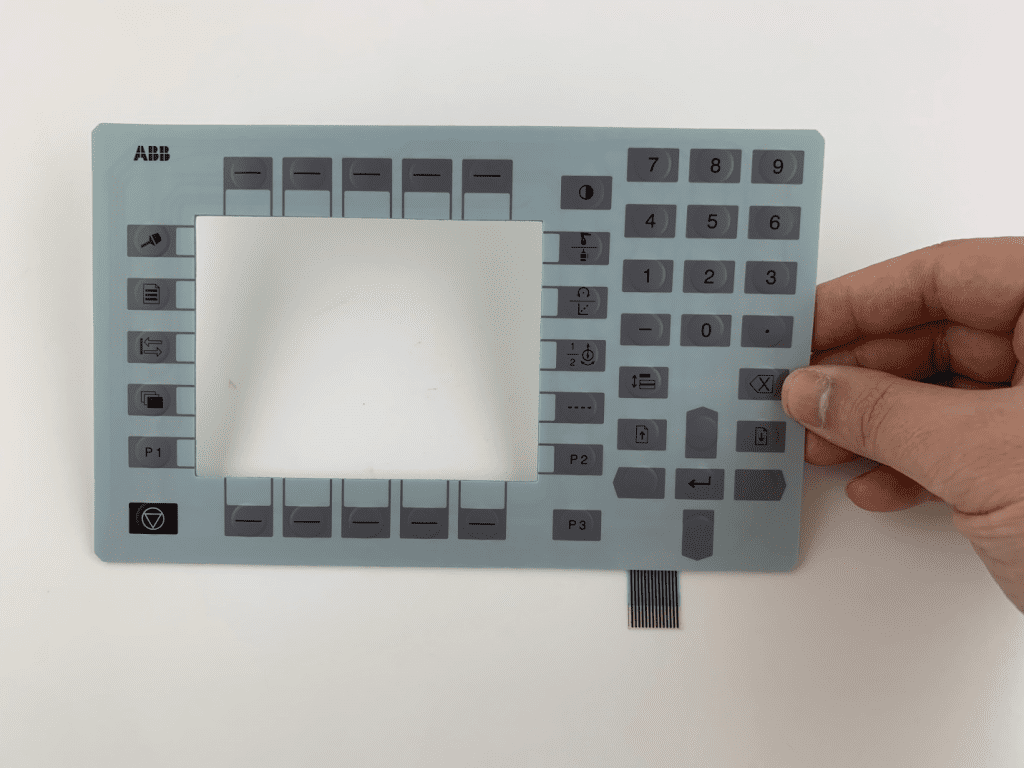Membrane Switches vs. Traditional Switches: What You Need to Know
Membrane Switches vs. Traditional Switches: What You Need to Know
Blog Article
Recognizing the Importance of Membrane Switches in Interface
Membrane buttons are important components in the style of reliable user interfaces, promoting not only functionality yet also improving visual charm and individual interaction. As we discover the various advantages and future trends associated with Membrane technology, it becomes clear that these buttons are extra than simply elements; they represent a convergence of development and usefulness.
What Are Membrane Switches?

The spacer layer, which has sticky residential properties, enables the splitting up of the circuit layer from the overlay, ensuring that the switch continues to be in a non-activated state until pressed. When stress is used to the overlay, it presses the spacer layer, connecting the space and completing the circuit in the underlying layer. This style not only lowers the physical room required for typical mechanical buttons but additionally improves the resilience of the tool, as Membrane buttons are generally resistant to dirt, dampness, and various other environmental variables.
Typically located in applications varying from consumer electronics to clinical devices, Membrane switches are important to modern technology, supplying a effective and user-friendly interface that straightens with contemporary style needs.
Benefits of Membrane Switches
While numerous button modern technologies exist, Membrane Switches deal distinctive advantages that make them specifically preferable in numerous applications. Among the key benefits of Membrane switches is their portable design, which enables space-saving implementations in tools where realty is limited. Their thin account not just enhances visual appeal but also facilitates light-weight building and construction.
One more considerable advantage is their resistance to environmental aspects. Membrane switches are generally secured versus dampness, dirt, and impurities, making them suitable for use sought after environments, such as clinical tools and industrial tools. This sturdiness extends the life expectancy of the button, reducing upkeep expenses and boosting integrity.
Furthermore, Membrane buttons can be customized to fulfill details style needs, including unique graphics and colors that boost customer communication. Their responsive comments options can likewise be customized to offer an enjoyable user experience. Furthermore, Membrane switches are cost-effective, specifically in high-volume applications, as they can be produced effectively.
Applications in Different Industries

In the consumer electronic devices market, Membrane switches prevail in gadgets such as microwaves, washing machines, and push-button controls. Their tactile feedback and aesthetic choices boost user experience while giving a streamlined, modern-day look. In addition, auto manufacturers use Membrane switches in dashboard controls and infotainment systems, where area is restricted, and individual interaction is Get More Info essential.
In addition, the industrial sector leverages Membrane switches in control panels for machinery and devices, allowing for user-friendly procedure in often extreme environments. Their resistance to chemicals and wetness makes certain long life and reliability in these applications. Generally, the versatility of Membrane Switches adds significantly to their prevalent usage, making them crucial in different technical domain names.
Design Factors To Consider for Membrane Buttons

When developing Membrane switches, several key considerations have to be taken into consideration to ensure optimal functionality and customer experience. The option of navigate to this website products is crucial; choosing sturdy, high-grade substratums can improve the button's durability and resistance to environmental variables such as wetness and temperature changes.
Second of all, the layout of the graphic overlay must focus on clearness and simplicity of use. Icons and message should be clear, and the layout must help with instinctive interaction (membrane switches). Furthermore, responsive feedback is essential; including a responsive dome or various other systems can boost the user experience by providing physical verification of activation
An additional important aspect is the button's electric efficiency. Designers must guarantee that the conductive traces are properly created to decrease resistance and avoid signal disturbance. This includes analyzing the called for actuation pressure and making certain compatibility with the digital components they will certainly interface with.

Future Fads in Membrane Innovation
As technology remains to development, Membrane buttons are positioned to develop significantly, driven by technologies in materials and producing strategies. One arising trend is the incorporation of sophisticated products, such as conductive inks and adaptable substratums, which enhance durability and decrease the general weight of Membrane buttons. These products not just improve the tactile feedback however likewise enable the design of switches that can endure harsher environmental problems.
Additionally, the integration of touch-sensitive technologies is transforming conventional Membrane Switches into even more interactive user interfaces. Capacitive touch sensors installed within Membrane button panels can offer an extra intuitive and receptive user experience, lining up with the growing need for smooth, modern layouts in consumer electronics.
Furthermore, developments in printing strategies, such as digital and 3D printing, make it possible for rapid prototyping and personalization of Membrane buttons. This adaptability allows makers to react more rapidly to market needs and customer choices.
Lastly, sustainability is coming to be a significant focus, with manufacturers discovering environment-friendly materials and procedures. As these patterns unfold, the future of Membrane modern technology assures boosted performance, visual appeal, and environmental obligation, solidifying their duty in sophisticated interface across various industries.
Verdict
To conclude, Membrane Switches represent a vital element in the layout of individual interfaces, incorporating performance with aesthetic versatility. Their advantages, consisting of durability and resistance to environmental factors, make them suitable for diverse applications across different industries. Thoughtful style factors to consider boost customer interaction and experience. As sites developments in modern technology proceed, the evolution of Membrane buttons is anticipated to more improve interface, driving technology and boosting functionality in an increasingly intricate technological landscape.
Membrane buttons are integral elements in the design of efficient individual interfaces, promoting not just capability but likewise enhancing aesthetic appeal and user communication.Membrane Switches offer as an important component in numerous customer interfaces, helping with a smooth communication in between users and digital gadgets.While countless button technologies exist, Membrane Switches deal distinctive advantages that make them particularly desirable in different applications.Additionally, Membrane switches can be personalized to meet certain design needs, integrating one-of-a-kind graphics and shades that boost individual interaction.In final thought, Membrane Switches represent a vital part in the design of user interfaces, integrating functionality with aesthetic versatility.
Report this page